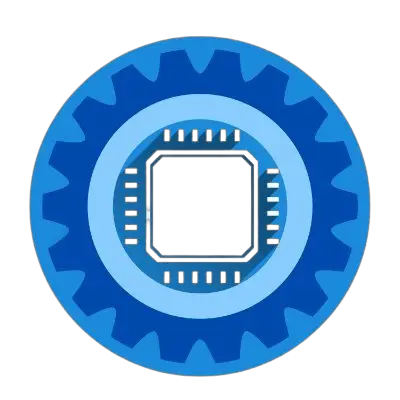Do you want to know the secret to getting a fast and reliable connection for your home or office network? You may have heard that Ethernet cables are the way to go, but do you know how to do the wiring?
Don’t worry—I’m here to help. In this article, I’m going to walk you through the basics of Ethernet cable wiring so that you can ensure you get the most out of your network.
As an IT enthusiast, I think that when you learn how to wire an Ethernet cable, you make yourself far more flexible when it comes to troubleshooting and organizing your home networking setup!
Table of Contents
- Stats and Info
- Understanding Ethernet Cable Wiring
- Understanding Ethernet Cable Wiring
- Making an Ethernet Cable with Wiring
- Conclusion: Making the Right Ethernet Cable Wiring Diagram
- FAQs
Stats and Info
• Ethernet Cable Wiring is most commonly used in home networks and comprises four twisted pairs of copper wires.
• The 8-core twisted pair cable consists of 4 pairs of colored wires, each pair consisting of a solid colored wire and a white and colored striped wire.
• The colored wires are used for data transfer, and the white wires are used for the signal return path.
• Ethernet cables support up to 10Gb/s speeds, which is 10 times faster than regular copper wiring.
• Ethernet cable wiring is called Cat 5, Cat 5e, and Cat 6 wiring.
• Ethernet cabling is one of the most common forms of wiring used to connect computers and devices together in a local area network (LAN).
One of the most common issues with ethernet cable wiring is that it can be difficult to install and maintain. It takes time and effort to install the cables and troubleshoot any problems that may arise.
Additionally, it can cause slow or unstable networks if not installed properly. One potential fix is to make sure that all of the wires are connected correctly and securely.
If the wiring has to be extended, it’s best to use a suitable quality ethernet cable which can help to reduce the chance of issues. Another helpful way to fix any problem with ethernet cable wiring is to run a speed and connection test so that any areas of poor performance can be identified and addressed.
Lastly, if you’re having trouble installing your ethernet cables, consider seeking assistance from a professional technician who can diagnose and fix any issues.
Understanding Ethernet Cable Wiring
Ethernet cables are an essential part of setting up a local area network (LAN). An Ethernet cable basically consists of eight wires insulated and twisted together to form four pairs.
Each individual Ethernet cable has a specific wiring order which is designed to optimize the performance of your computer network. It is important to understand the wiring of the Ethernet cable and how it works in order to set up and maintain your network.
The first thing to know about Ethernet cable wiring is that it utilizes either a TIA/EIA-568a or a TIA/EIA-568b standard.
TIA/EIA-568a is the most common standard used to connect computers and other electronic equipment, while TIA/EIA-568b is used when connecting equipment with very high speeds. Understanding the different wiring standards will help you determine which type of Ethernet cable to use in your network setup.
The different colored wires in the Ethernet cable have a specific purpose. The wires are often color-coded according to the TIA/EIA-568 standard, with each color representing a different function. The colored wires are usually twisted together, then connected to a connector plug on either end of the cable.
The nuts and bolts of Ethernet cables are essential, but it’s also important to understand how the wiring order and connector pins affect the performance of your network. Specifically, the wiring type, cable length, and connections all play a role in the speed, stability, and reliability of your network.
If you have questions about Ethernet cable wiring, plenty of information is available online. You can also consult an experienced IT professional who can help you understand the basics of Ethernet cable wiring and help you select the right cable for your network.
Understanding Ethernet Cable Wiring
To understand the wiring of an ethernet cable, it helps to know the standard pin assignments. An ethernet cable is a type of network cable used to connect two or more devices together in a Local Area Network (LAN).
Many modern ethernet cables are made with eight wires inside a plastic jacket, which makes it easier to connect to computers and routers. Each of these eight wires has a specific purpose and, when appropriately connected, allows for two-way communication between the devices.
The most common type of pin assignments for ethernet cables is the TIA-568A and the TIA-568B standards. These standards define which wires are used for which signals, though there are also crossover cables available that use different wiring combinations. The standard TIA-568A wiring sequence is as follows:
1. White/Orange
2. Orange
3. White/Green
4. Blue
5. White/Blue
6. Green
7. White/Brown
8. Brown
Using this wiring sequence, the orange wire is used to transmit data, and the green wire is used to receive data. These two wires make up the basic connection between two devices. Additional cables are also used for link integrity and to ensure the relationship remains secure.
When wiring an ethernet cable, it is essential to ensure that the wiring is done properly and that the connectors are appropriately secured. If the wiring is not done correctly, or the connectors are not properly secured, the cable may not work properly.
It may also be necessary to use special tools to ensure the wiring is done correctly. Once everything is connected and secured, it is usually possible to test the connection with a continuity tester.
Understanding ethernet cable wiring is critical to establishing a reliable connection between two or more devices in a LAN. By following the TIA-568A and TIA-568B standards and double-checking the wiring, it is possible to create a secure connection for two-way communication.
Making an Ethernet Cable with Wiring
Making an Ethernet cable from wiring is a relatively simple process. With the right supplies and just a few steps, anyone can have their own Ethernet cable in no time. Knowing when and how to use the different Ethernet wiring standards, along with having the proper tools, is key to creating a reliable, lasting connection.
With a little bit of basic knowledge and the right supplies, creating an Ethernet cable is not a daunting task. diagram
Conclusion: Making the Right Ethernet Cable Wiring Diagram
When it comes to setting up an Ethernet network, it is critical to ensure that the right wiring diagram is being used. It can be challenging to determine which wiring diagram is right for a particular application, but it can be done with some research and testing.
A clear understanding of a network’s wires and connections is essential to ensure a quality experience. With the right knowledge, resources, and expertise, anyone can create the right wiring diagram for their Ethernet network, enabling reliable, secure connections.
Creating the right Ethernet cable wiring diagram can be a valuable skill for any IT professional, for it can provide a foundation to build and maintain a secure, reliable network. It enables the connection of devices to one another and can help to ensure the security of data and information.
Without a proper wiring schematic, the risk of data loss or corrupted networks can be high. To gain this expertise, individuals should invest in the necessary resources, such as tools and materials, and take the required training courses to better understand the wiring process.
Overall, wiring an Ethernet cable the right way is essential to any IT professional. With the right resources and training, it is possible to create the right wiring diagram for any application.
With a reliable, secure network, data can flow freely, and information can be protected. In the end, a properly wired Ethernet cable can be invaluable to any IT professional.


